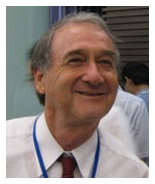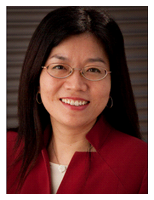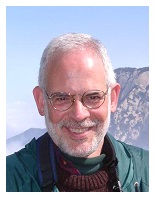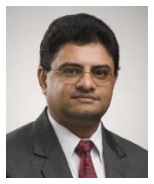Adi Abileah – Adi Display Consulting – USA
"Displays for automotive, avionics, military and medical applications”

Adi Abileah, consultant, retired from Planar Systems (Beaverton, Oregon), where he served as the chief scientist at the Technology Group. His main activity was related to development of active matrix liquid crystal displays (AMLCD), physics and optics of the displays of several technologies, and backlights and enhancement techniques.
Adi has B.Sc. in Physics from the Technion (Israel Institute of Technology) and M.Sc. in Plasma Physics from the Hebrew University, Jerusalem. And a 2-year research work at the university on high power CO2 lasers. He developed soil mechanics density sensors at the Negev Institute, Israel. His first industry job was in medical imaging (Nuclear Medicine) at Elscint, Israel. He was the head of the Electro-Optics Group at Elbit for several years, and then the manager of EL-OP north branch R&D center in Haifa, Israel. On 1987, he joined OIS – Optical Imaging Systems in Michigan where he became the manager of the optics group and responsible for all related topics in the development of AMLCDs. During this period, he became expert in the optics of AMLCDs, testing techniques, and liquid crystals physics. He served at OIS until the company closed at 1998 and then joined Planar.
Adi has 44 US patents, mostly related to displays, backlights, 3-D stereo and in-cell optical sensors. He presented many technical papers at SID, SPIE, and OSA conferences, and gave several seminars at SID. In 2005, he received the Fellow Award of SID. In 2012, he got the SID Otto Schade Prize. In 2011 he got a Presidential Citation Award in recognition for organizing LatinDisplay 2010. Since 2007, he is serving as the director of the Pacific Northwest chapter of SID. Adi co-chaired and was program chair of ADEAC conferences (2005/2006). He was program chair of Latin-Display/IDRC (2010/2011) and co-chair (2012). In 2011 he was awarded with a Presidential Citation Award of SID in recognition for organizing LatinDisplay 2010. Adi is an Associate Editor for JSID 3-D displays and chairing the 3-D stereo subcommittee of ICDM standards, as well as member of SAE-J-1757 standard group. He is the chair of the Applications subcommittee for the SID conferences.
Daniel den Engelsen – ABINFO - Brazil
“Lighting, light sources and BLUs”

Daniel den Engelsen was born in Koudekerke (Netherlands), on October 14, 1941. After finishing high school in the town of Middelburg he went to the University of Utrecht in September 1958 to study chemistry and physics. He passed his M. Sci. degree in January 1964 with a major in Theoretical Chemistry. From January 1964 to February 1968 he worked at Utrecht University (Netherlands) and the University of Copenhagen (Denmark) as a post graduate on the determination of the molecular structures of methoxy-ethyn and methylthio-ethyn by microwave spectroscopy. On February 28, 1968 he got his PhD. at the University of Utrecht (Supervisors: Professor Dr. D.H.W. den Boer and Professor C. Th. J. Alkemade). Title of his thesis (in Dutch) was: Investigation of the microwave spectra of methoxy ethyn and methylthio ethyn. From 1968 to 1977 he worked in Philips Research Laboratories Eindhoven (Netherlands). His first research subject was studying multi-molecular layers of fatty acids and luminescent materials on semiconductor surfaces. The aim was to develop a molecular memory device. Various papers were published on the preparation and analyses of these layers. The next research subject was synthesizing and characterizing super-ionic conductors for batteries and fuel cells.From 1977 to 1998 he worked largely on CRT-technology in the Development Laboratory for CRTs of Philips Display Components in Eindhoven. In the late 1970s and early 1980s years he focused on cathode, electron gun and getter technologies and tube processing. The oxide cathode that was applied in Philips´ CRTs from 1984 onwards was designed, developed and stepwise introduced into production by him.In the second half of the 1980s in the 1990s he was leading advanced development groups in Philips Display Components. In that period he was also responsible for technology transfer of Philips Display Components to Matsushita Electronics Company (MEC) in Takatsuki (Japan). First he led the development of sophisticated software packages on electron optics used for the development of electron guns with improved main lenses to reduce the spherical aberration, viz. the spiral gun and distributed main lens with a voltage divider. At the end of the 1980s he was involved in the development of spiral guns and interference filters for projection tubes that had the highest resolution and light output at that time. A pilot factory for manufacturing those tubes was built in the USA.In the 1990s he led the development of improved CRT phosphors, pigments for color filters, shadow mask technology (a/o. tension mask technology) and screen processes. He initiated many R&D and advanced development projects in these areas, e.g. a project on new photosensitive compounds with enhanced sensitivity for patterning phosphors and the black matrix. Regarding the industrial development of color filters and tension masks, he set up a kind of cooperation between Philips Display Components in Eindhoven and Toshiba and Sony in Japan respectively.From 1998 to 2004 he initiated and participated in projects on field emission and electroluminescence displays respectively. Contacts and cooperation agreements with many companies were created, e.g. with PFE in the UK, Motorola in the USA, Hitachi, Toshiba and Noritake in Japan and iFire in Canada.From 1998-2004 he was responsible for the co-operation between Philips Display Components and Southeast University (SEU) in Nanjing (China) in the areas of Field Emission Displays, electron optics for electron guns, deflection coils, visual perception and metrology for Flat Panel Displays. At SEU and at the University of Electronic Science and Technology of China (UESTC) in Chengdu (China) he was nominated in 2001as visiting professor and he regularly gave seminars and courses on display technology for graduate & postdoc students and staff members. He was nominated as Fellow of the SID in 2002 and received the Innovation Award of Philips Display Components in the same year. On April 30, 2004 he retired from Philips Display Components and started doing consultancy work on cathodes for LG. Philips Displays Blackburn, on FEDs and backlights for Philips Lighting and on CRT-technology for Caihong in Xianyang (China). In 2006 he was nominated as Senior Scientist at the Centro de Tecnologia da Informação Renato Archer in Campinas (Brazil) and in 2007 he also became Senior Scientist at the Associação Brasileira de Informática (ABINFO), an R&D-institute in Campinas (Brazil). In July 2008 he was nominated as Professor Associate at Brunel University in London (UK). In 2009 he initiated cooperation between Philips Lighting in Aachen (Germany) and Certi in Florianopolis (Brazil) on the development of OLED lamps and systems for the South American market. Since 2000 he presented many (invited) conference papers and seminars at SID and other conferences. He published papers in scientific journals from 1965-1977 and from 2000 to present. From 2004-2012 he was associated editor (and reviewer) of the Journal of the Society of Information Display. He also reviewed many manuscripts for IEEE-journals, J. Vac. Sci. Tech. and Appl. Surf. Sci. From 2010 onwards he is working on: electron emission devices, gas discharge phenomena in fluorescent lamps and PDPs, solid state chemistry, thin film technologies, nanotechnology, phosphor materials, luminescence and heat transfer technologies.
Gopalan Rajeswaran – Founder and Director, Grantwood Technologies, USA
“Advances in Photovoltaic Technologies”

Dr. G. Rajeswaran (“Raj”) received the B.E, M.Tech and Ph.D. degrees in Electrical Engineering in 1976, 1978 and 1983 from the University of Madras, the Indian Institute of Technology and the State University of New York, respectively. Over the past 30 years, Raj has been actively engaged in international conferences by delivering several invited seminars, tutorials and short courses in the fields of photovoltaics and OLEDs. He has delivered 100+ conference presentations and publications. He holds 16 US patents in the field of LEDs, OLEDs and PV. In 2013, Raj was elected as Fellow of the Society for Information Display for pioneering contributions to the development, manufacturing and commercialization of AMOLED displays.
• In 2014, Raj founded Grantwood Technologies for the development and commercialization of next generation AMOLED technologies, LED lighting products and photovoltaic products.
• From 2009 to 2012, Raj established Moser Baer’s R&D laboratories in Eindhoven (the Netherlands) and Rochester (New York) where advanced thin film solar cells and OLED lighting technologies were developed. During this period, Moser Baer’s LED lighting R&D laboratory was established in New Delhi/India and the LED lighting business unit was founded for the development of India market.
• In 2007, Raj moved to India where he joined Moser Baer Photovoltaic Ltd (New Delhi, India) as its President and Chief Technology Officer. From 2008, he assumed a broader technology role as the Group Chief Technology Officer of Moser Baer India Ltd. From 2007 to 2009, Raj established Moser Baer’s 250MW+ PV cell and module manufacturing facilities in India and began shipments of PV module products.
• In 2004, Raj returned to Kodak and was based at Kodak Japan (Tokyo) where he served as the Vice President for Advanced Development & Strategic Initiatives in the OLED business unit. In this capacity, he was charged with promoting OLED business alliances among major display companies in Japan, Korea & Taiwan. Simultaneous with business responsibilities, Raj also held the position of Senior Research Fellow in the Eastman Kodak Research Laboratories.
• In 2001, Kodak and Sanyo established SK Display Corporation (SKD) in Gifu/Japan, the world’s first AMOLED display manufacturing company. Raj, as the founding member of this joint venture, moved to Japan to manage operations at SKD where he served as a Representative Director and Vice President from December 2001 until January 2004. In 2003, Kodak introduced the first commercial digital cameras containing SKD manufactured AMOLED displays.
• In 1996, Raj became the program manager of OLED technology development and commercialization at Eastman Kodak Company. He established the Kodak-Sanyo joint development alliance that resulted in the world's first active matrix OLED displays in 1999.
• In 1985, Raj joined Eastman Kodak Company as a group leader & technical coordinator within the compound semiconductor group. In 1990, Raj became the technical director of the LED device manufacturing facility at Kodak where he managed the production technology for high brightness LEDs using a proprietary solid-state zinc-diffusion process. In 1992, he moved to the Kodak Copier Division where he managed the development and supply of LED array printheads from global partners and the manufacturing of writer subsystems for Kodak’s high-speed digital copiers/printers.
• In 1982, Raj joined Brookhaven National Laboratory as a staff scientist and was involved in the early years of amorphous silicon thin film solar cell development.
Antonio Hèlio Castro Neves - Director, Graphene Research Centre
Distinguished Professor, Department of Physics
Professor, Department of Electrical and Computing Engineering
Professor, Department of Materials Science and Engineering
National University of Singapore
Professor of Physics, Boston University, U.S.A.
“Graphene and Applications”

Prof. Antonio H. Castro Neto is a material’s scientist and condensed matter theorist who is achieved world recognition for his works in rare earths, actinides, and two-dimensional materials such as transition metal dichalcogenides, and graphene.
Professor A. H. Castro Neto obtained his Ph.D. in Physics at University of Illinois at Urbana-Champaign in 1994. During his Ph.D., Prof. Castro Neto worked on the fundamentals of the theory of metals, magnets, and superconductors. In 1994, he moved to the Institute for Theoretical Physics at the University of California at Santa Barbara as a postdoctoral fellow. There he worked on the physics of low dimensional materials. In 1995, he became an Assistant Professor at University of California where he published influential papers on the effects of disorder in the properties of metallic alloys of rare earths and actinides. Since 2000, he has been at Boston University as Professor of Physics where he was the Director of the Condensed Matter Theory program. In Boston, Prof. Castro Neto became the leading theorists in the study of graphene, a two-dimensional allotrope of carbon that is atomically thin and is revolutionizing several different industries from chemical to electronics.
Prof. Castro Neto is responsible for the popularization of graphene worldwide. He was directly involved in the research that eventually lead to the Nobel Prize in Physics in 2010 to Prof. A. K. Geim and Prof. K. S. Novoselov, for “groundbreaking experiments in graphene”. Prof. Castro Neto has been collaborating with Prof. Geim and Prof. Novoselov since their radical discoveries of 2004-2005. Prof. Castro Neto is the leading author, together with Geim and Novoselov, of one of the most cited papers of the last decade: “The electronic properties of graphene”, published in Reviews of Modern Physics in 2009.
In 2010, Prof. Castro Neto helped to create and became the Director of the Graphene Research Center (GRC) and Distinguished Professor at the National University of Singapore (NUS). GRC is supported by NUS and the National Research Foundation of Singapore (NRF) and involves more than 120 people including 40 Professors from several disciplines. GRC is first research centre in the world to explore the properties of two-dimensional crystals, i.e., materials that are just one atom thin and have extraordinary properties that have impingement in many different areas of material science and can produce new disruptive technologies with huge societal impact.
In 2003, Prof. Castro Neto was elected a fellow of the American Physical Society (APS) for his contributions to the theory of strong correlations, fluctuations, and inhomogeneities in high temperature superconductors and quantum magnets. In 2012, he was elected fellow of the American Association for the Advancement of Science (AAAS). He is also the colloquia Editor for Reviews of Modern Physics, the scientific journal with highest impact index in the world. Prof. Castro Neto was awarded the 11th Ross J. Martin Award by the University of Illinois at Urbana-Champaign, the University of California Regent Fellowship, the Alfred P. Sloan Research Fellowship, the visiting Miller Professorship by the University of California at Berkeley, and the Gordon Godfrey Visiting Professorship at the University of New South Wales, Sydney, Australia, the Distinguished Visiting Chair Professorship at the SKKU Advanced Institute of Nano-Technology (SAINT), South Korea, and the Hsun Lee Award by the Institute of Metal Research at the Chinese Academy of Sciences.
Prof. Castro Neto has authored more than 300 manuscripts and has published in prestigious journals including Science, Nature, Nature Physics, Nature Materials, and Physical Review Letters, and has over 18,000 citations. Prof. Castro Neto has given more than 300 seminars worldwide. Prof. Castro Neto participated in 15 invention disclosures and patent applications in topics ranging from solar energy to hard-drive coatings. His research has spanned a broad range of topics in materials science and condensed matter.
Jennifer Colegrove - Touch Display Research – USA
“Touch Panel and Touchless control - New Opportunities in 2015 and Beyond”

Dr. Jennifer K. Colegrove is the founder, CEO and principal analyst of Touch Display Research Inc. (www.TouchDisplayResearch.com), a market research and consulting firm focus on touch screen and emerging display technologies. She writes reports and performs consulting projects on touch screen and display technologies, including touch screens, ITO replacement, near-eye displays, flexible displays, OLED displays, OLED lighting, 3D displays, e-paper displays, pocket projectors, gesture control, voice control, eye control.
Colegrove is well known as the first analyst to write a comprehensive touch screen industry report since 2006. It has been 8 years in a row. Colegrove has over 15 years of industry experience. She is the principal analyst at Touch Display Research from 2012 to present. She was Vice President of Emerging Display Technologies at DisplaySearch from 2008 to 2012. She served as a senior analyst at iSuppli (currently IHS) in 2006 to 2008. She performed due diligence for Intel Capital, the venture capital arm of Intel, as a senior display engineer from 2004 to 2006. She held senior engineer or project manager positions from 1999 to 2003 in several start-up companies.
She has authored over 50 forecast reports and over 100 articles. Her articles have appeared in SID Journal, Information Display, IEEE Journal, Nikkei BP, Veritas et Visus, etc. She is frequently quoted by media and industry press, including the Wall Street Journal, New York Times, Forbs, Bloomberg, and Computer World. Dr. Colegrove has been a featured speaker and session chairperson at over 40 worldwide conferences. Dr. Colegrove has advised over 200 companies through her standard reports or consulting projects in recent several years. She is currently a member of advisory board at Linde, which is the world’s largest gases and engineering company. She can be reached at jc@touchdisplayresearch.com
She has five patent applications with one US patent granted.
Jennifer Kong Colegrove has a Ph.D. from Liquid Crystal Institute at Kent State University in Ohio. She received both her bachelor’s and master’s degrees with honors from Beijing University in Beijing, China.
Kenneth I. Werner - Nutmeg Consultants - USA
"How many pixels are enough?”
“Are quantum dots closing OLED-TV's window of opportunity?"

Kenneth I. Werner is the founder and Principal of Nutmeg Consultants, and was the Editor of Information Display Magazine from 1987 to 2005. He serves as a Senior Analyst for Insight Media, is a founding co-editor and regular contributor for Display Daily, and is a regular contributor to HDTVexpert.com and HDTV Magazine. Mr. Werner regularly addresses technical and trade organizations in the Americas and Asia, and is routinely consulted by brokers, analysts, attorneys, members of the international press corps, and companies entering or repositioning themselves in the industry, or wishing consulting services on display technology, the display industry, or display and component sourcing. He speaks frequently with senior corporate and technology executives of large, mid-sized, and small display-related companies in Asia, Europe, and the Americas, as well as government officials and academic researchers. At BRDisplay II (July 2004, Recife, Brazil), he served as a consultant to the working groups developing a national strategy for the growth of display-related industry in Brazil and wrote the introduction to their report. He is the Marketing Consultant for Tannas Electronic Displays, and has done extensive research on markets for custom-sized and bar-type displays, particularly for signage applications. Mr. Werner began his career as a semiconductor device design engineer for RCA. He holds a B.A. in physics from Rutgers University and an M.S. in solid-state physics from the University of North Carolina at Chapel Hill, and has taken graduate management courses at the University of Connecticut. He has been an active participant in the display industry since 1987. Mr. Werner has given keynote presentations at LCD/PDP International 2001 (Yokohama, Japan), and InfoDisplay VI (October 2003, Fortaleza, Brazil), and invited presentations at the winter Consumer Electronics Show 2002 (Las Vegas, Nevada), the International Display Manufacturing Conference 2002 (Seoul, Korea), the Liquid Crystal Institute (November 2002, Kent, Ohio), , IMID 2005 (Seoul, Korea), The Signage and Graphics Summit (January 2007, Tucson, Arizona), LatinDisplay 2007 and 2008 (Campinas, Brazil), and LatinDisplay 2009 (Sao Paulo). He was a referee for the Display Invention Competition held in August 2003 in Korolev, Russia. Most recently, Mr. Werner delivered invited papers at Technologies for Custom Display Modules (SID-LA, Feb. 5, 2010); CVCE 2010 in Asan, Korea; LatinDisplay 2010 in Sao Paulo, Brazil; and Organic Displays, Lighting, and Electronics, (SID-LA, Feb. 2011). He delivered a keynote luncheon address on OLED displays at the Nomura Pan-Asia Technology Forum (May, 2011, Hong Kong) and an invited presentation on 3D displays at Display Taiwan (June 2011, Taipei). Mr. Werner was program chair for the highly successful One-day Symposium on Emerging Display Technologies sponsored by the Los Angeles Chapter of the Society for Information Display (Feb. 2012). He is a member of the Society for Information Display and IEEE, and was Chairman of the Advisory Board for the award-winning IEEE Circuits & Devices magazine.
Munisamy Anandan – SID and Organic Lighting Technologies LLC, USA
“Trends in OLEDs for lighting”

Munisamy Anandan, PhD, is President and Managing Member at Organic Lighting Technologies, an optical component manufacturer. He specializes in market research, marketing, LCD backlighting, and flat panel display technologies. He has experience in OLED backlight for cell phones, LED backlight, LCD TV, CRT, SED, and desktop monitors. He is knowledgeable in market and technology trends for the plasma, projection television market, LCDs for desktop monitors, and OLEDs. He is experienced in the LCD, Plasma, OLED, Flat fluorescent lamp, LCD backlighting, field emission display markets and has established processes for mass manufacturing for LCD, Plasma, OLED, Flat fluorescent lamp, and LCD backlighting. He is a senior member of IEEE and the SID. He has delivered a "Key-Note Address" on 'LED backlight for LCD' at International Conferences in Moscow and Korea.
Paul Breddels - Holst Center Eindhoven
“Infrastructure and equipment for solar cell manufacturing”

Dr. Paul Breddels started his career at Philips Research Laboratories in the area of LCDs in 1984. He was sent to the Tokyo Institute of Technology (Tokodai) from 1988 to 1990 to work in the area of a-Si TFTs.
In 1991, Paul joined Merck and was sent to Korea to build up the Liquid Crystal activities for Merck in that country. In the early nineties, Paul also frequently visited Taiwan to render technical support together with the sales activities of (at that time mostly TN/STN) liquid crystals.
In 1996, Paul moved to Merck Japan and became Division Manager for Liquid Crystals. At that time the first generation of VA and IPS liquid crystals were launched at Japanese LCD manufacturers.
From 2000 to 2004, Paul was Country Manager for all operations of Merck in Taiwan and he lived in Taipei. At that time, the construction of mixture production and laboratories for the Taiwan operation and for the Taiwanese customers was planned and executed.
In 2004, Paul became Global Head of the Merck LC Division in Merck’s headquarter, responsible for all operations worldwide.
In 2007, Paul left Merck and became CEO of the Dutch company OTB, specialized in design and manufacturing of machines in the area of silicon based solar cells. This company was sold to its competitor Roth und Rau in 2010 and Paul was offered the position of COO in Roth und Rau in Germany. In 2011, Roth und Rau subsequently was sold to Meyerburger in Switzerland and Paul left.
Today, Paul is engaged in Holst to support to increase its alliances in the Asian OLED market space. Given the rapid development of this technology, this is a focus area.
In addition, he is engaged with several Dutch/German high tech companies to assist them to increase business activities in Asia (and Latin America).
Sri Peruvemba - Cambrios Technologies - USA
“Advances in Transparent and Conductive Thin Films for Displays and Touch Screens”

With more than two decades of experience in the technology industry, Sri Peruvemba is head of marketing for the Society for Information Displays (SID), as well as Vice President of Corporate Marketing for Cambrios Technologies, the leader in transparent conductors. He is also an advisor to Kent Displays and YFYJupiter and Chief Executive Officer at Marketer International, a marketing services company.As the go-to expert source on electronic displays and related technology for many of the leading technology writers in the country, Peruvemba is frequently quoted in the Wall Street Journal, New York Times, Forbes, Bloomberg, Financial Times, and many other publications. He is also regularly invited to present at major technology conferences, has published several articles and white papers, and often leads seminars and classes on the display industry.His 25 years of experience in the electronics industry include marketing LCD, CRT, TFEL, OLED, LED, Plasma and ePaper displays into the mobile, industrial, medical, signage and TV markets. He earned a BSEE, a MBA and a Post Graduate Diploma in Management. Previously. Peruvemba held senior level positions at E Ink, Sharp Corp, TFS Inc, Planar Systems and Suntronic Technology.
|

